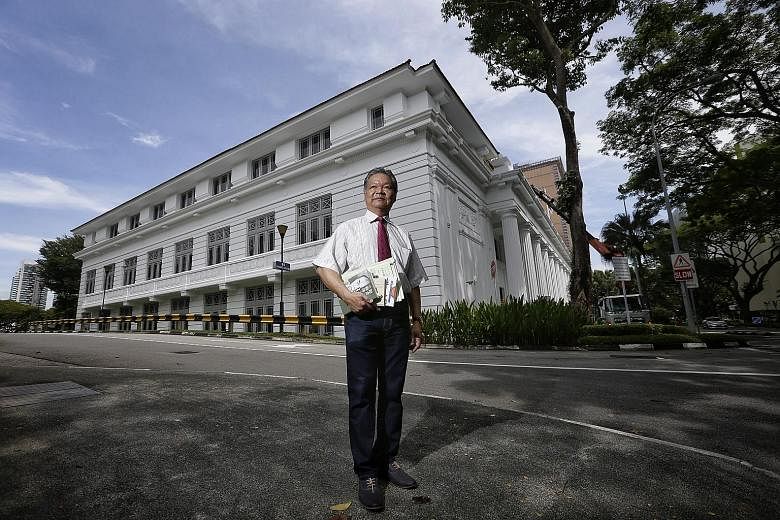Rat fleas carrying the bubonic plague that killed thousands of people in China during World War II were bred in Singapore.
A branch of the nefarious Japanese biological and chemical warfare research and development Unit 731 was housed in the College of Medicine Building during WWII.
Little had been known about the Singapore branch OKA 9420 until history researcher Lim Shaobin acquired Japanese war records and texts.
Mr Lim, who reads and speaks Japanese fluently, learnt from Japanese WWII documents that Singapore served as a base so rats and fleas could be transported overland to two places in Malaya - the 251ha Tampoi Mental Hospital built in the middle of a forested area in Johor by the British and a secondary school at Kuala Pisa, near Kuala Lumpur.
They were also sent to a facility, in Bandung, Indonesia, by air.
Malaya became Unit 731's largest breeding ground outside of Japan and China. The unit's research found that rat fleas thrived in temperatures between 27 deg C and 30 deg C, and at 90 per cent humidity. It also noted that 10,000 mice could produce 10kg of fleas.
Mr Lim, who was invited by the Singapore Society of Asian Studies to speak on the topic at the National Library Building on Nov 4, dug out this information from a 2009 research report in Japan.
Records show that the bubonic plague killed 3,031 people in China's Jilin province in June 1940 and 9,060 people in Zhejiang province's Qu County on Oct 4 in the same year. The fleas had been dropped from air by Japanese military aircraft.
Singapore was one of four branches of Unit 731 and the only one outside China. Unit 731 and its branches were staffed by Japan's top doctors.
Mr Lim found the operation's organisational chart from a Japanese book published in May this year that criticised the unit. He said: "This story needs to be told because Singapore and its infrastructure was used as a base to spread destruction in the region. As a victim of war, we need to consider how we can defend ourselves from attacks.
"The Japanese planned such a massive operation and yet they had such watertight confidentiality. We still don't fully know what happened 70 years later. I believe it is our duty to understand, discuss the subject and grow research in this area."
He said a plaque at the College of Medicine Building - home to the Ministry of Health today - does not include this aspect of its history.
The late pioneer generation leader Othman Wok's oral history account also sheds light on the covert operation. Mr Othman, who worked there as a lab assistant during the war, used traps to catch rats from all over Singapore every day. He said the rats were searched for fleas, which were made to feed on the blood and organs of rats that had died of bubonic plague.
He said once in every three to four months, millions of these fleas were taken alive in big glass jars to Thailand by train.
To supplement the local population of rats, OKA 9420 staff transported rodents from Tokyo to Singapore. It is unclear how many trips from Japan were made.
On June 15, 1945, the OKA 9420 in Johor moved back here and on June 24, the branch left Singapore for Laos for an unknown reason. Before the Japanese surrendered, all records of its operations in Singapore and the region were burned.
After the war, the head of OKA 9420, Naito Ryoichi, who had been fluent in English, negotiated for their release with the American army in exchange for Unit 731's remaining medical reports, experiment data and theses.
Unit 731 was known to have conducted "chilling experiments". Men and women of varying age groups, fed and unfed, were put in the cold and observed as they died.
Mr Lim believes the OKA 9420 also likely experimented on humans. To further his research, he needs help to read medical papers written during the Japanese Occupation by Naito's right-hand man in Singapore - Iichiro Otaguro.
Mr Lim got hold of these papers in China after hunting them down online just two months ago.


